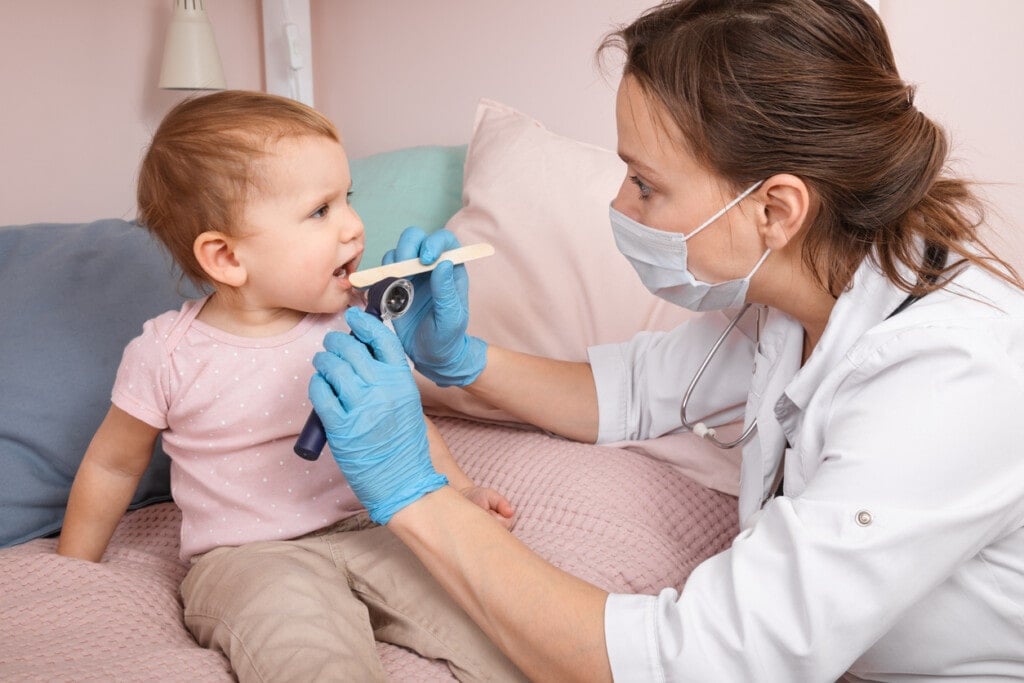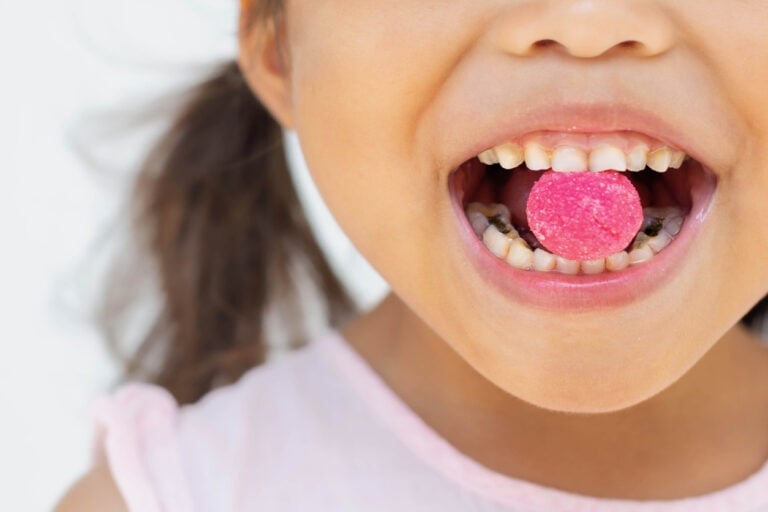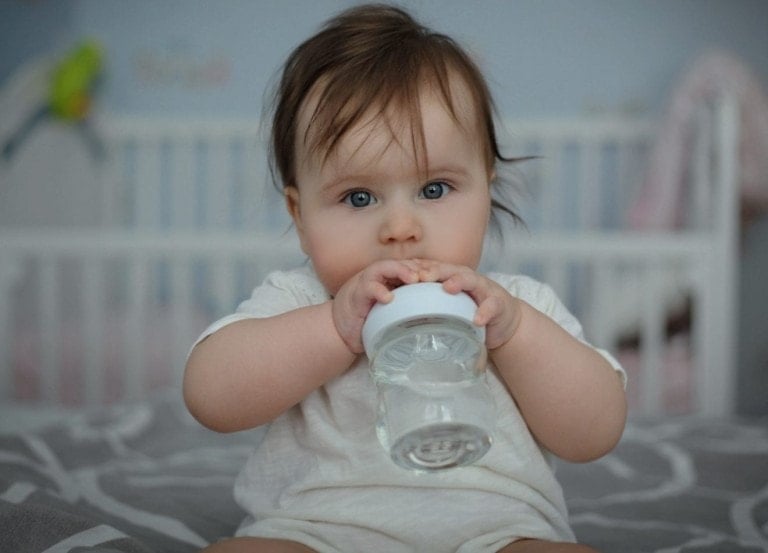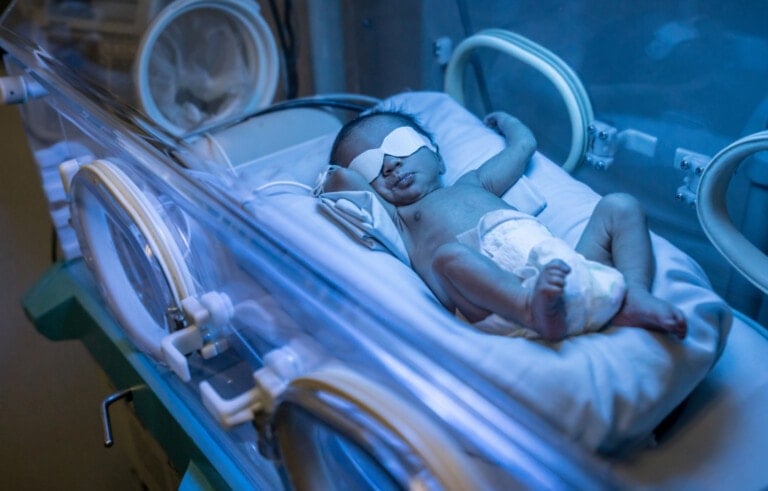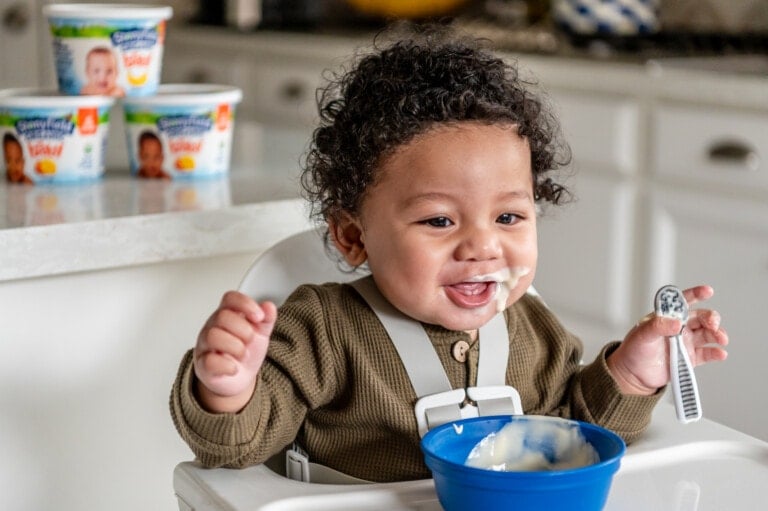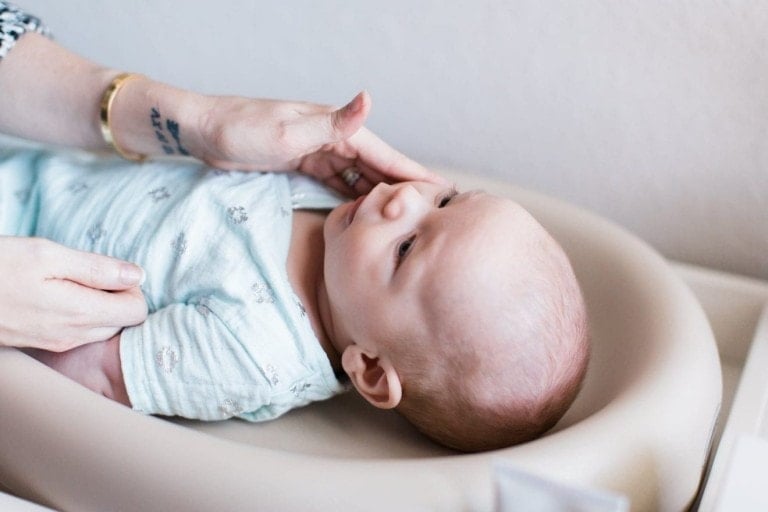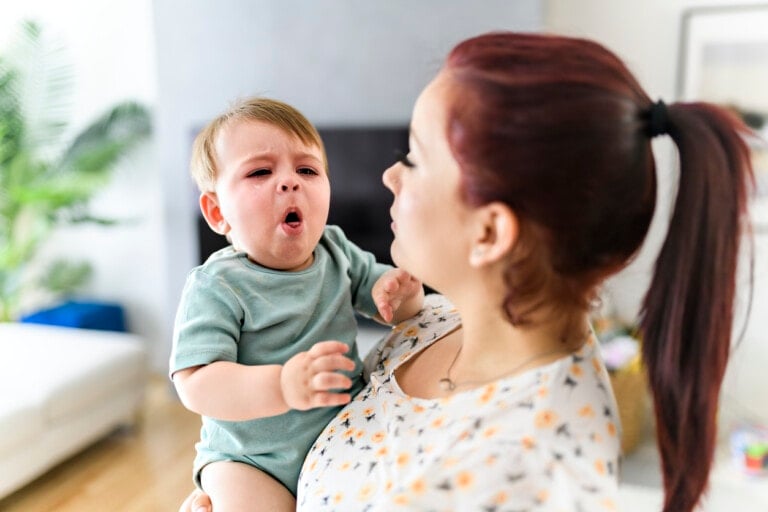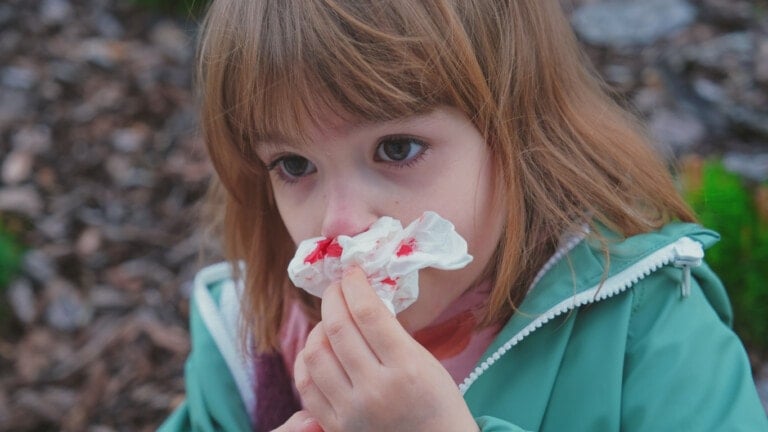Can a baby get a sore throat? The answer is yes, they can. Babies can get a sore or red throat, but can’t tell you it hurts. And since the signs and symptoms of a red or sore throat in a baby are similar to the common cold or teething, it is tricky to decipher why it is happening. A sore throat’s cause can be infections, such as bacterial, viral, or fungal infections, or internal or external irritants.1
There are 7.3 million outpatient visits to the doctor every year in the United States due to a sore or red throat in children.1 That’s a lot of sore throats! So, the most important thing to know about your baby’s sore throat is when to call your doctor.
How To Tell if Your Baby Has a Sore or Red Throat
Symptoms of a baby or toddler sore throat can vary according to the cause. You may notice that your baby is experiencing more fussiness, having difficulty swallowing, drooling more than usual, showing changes in eating or drinking patterns, or having a hoarse or scratchy cry. The perplexing part for the parents is that these signs and symptoms can be similar to other common baby issues, such as the common cold, teething, allergies, etc. So, here is a list of the most common signs to watch for:1,2
- Irritability: Babies with sore throats may be fussy and more difficult to console.
- Difficulty swallowing: Your baby might have trouble swallowing, which could lead to more drooling or spitting up.
- Coughing: A persistent cough, especially if it sounds hoarse or dry, can indicate (or lead to) a sore throat.
- Refusing food: Babies with sore throats may be reluctant to eat or drink due to pain.
- Fever: A mild fever can accompany a sore throat, so monitoring the fever’s progression can be helpful.
- Changes in behavior: Your baby might be more tired or have trouble sleeping due to discomfort.
- Redness in the back of the throat: Obvious redness in the back of the throat or red dots on the roof of the mouth can indicate an illness.
Common Causes of Sore or Red Throat in Babies
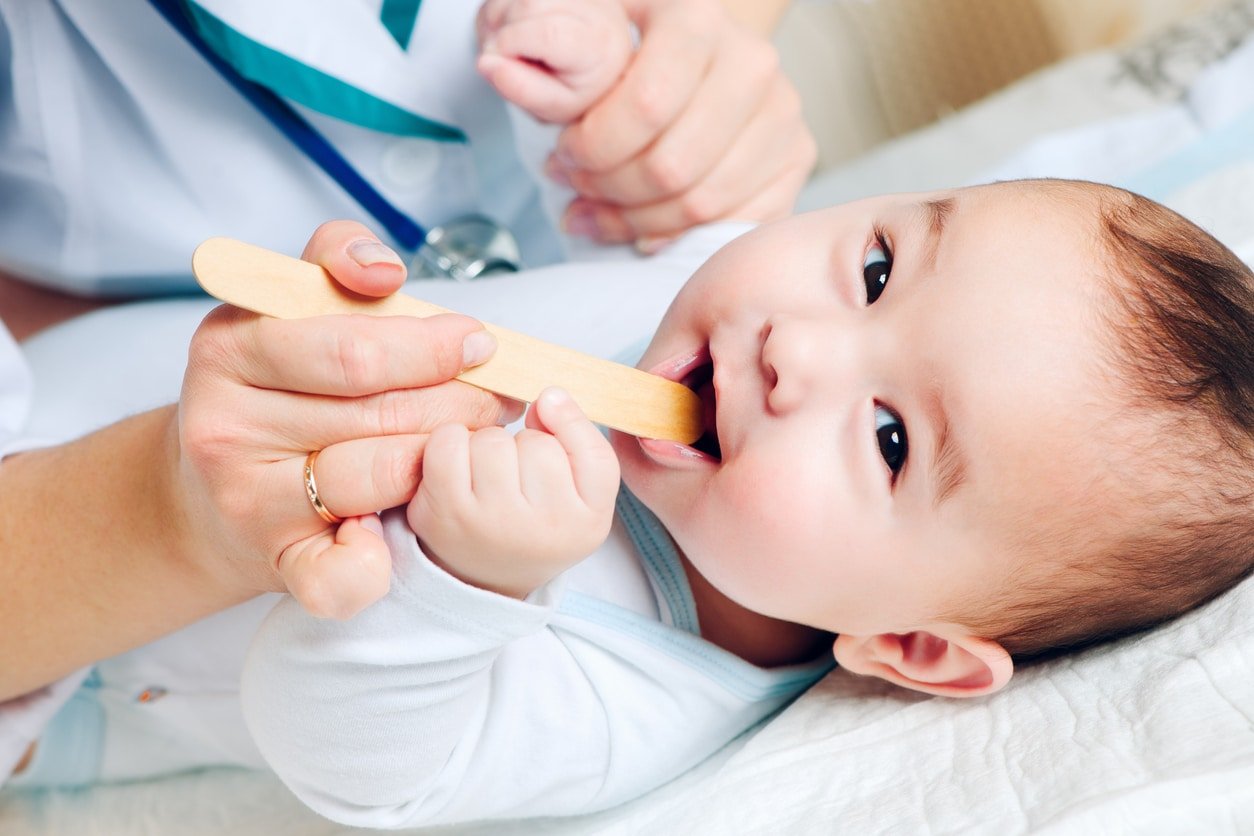
A sore or red throat is a widespread illness in children, usually caused by a virus such as the common cold. Babies can have up to seven colds on average in their first year, especially if they have older siblings or attend a daycare. This is due to their ever-growing and changing immune system, which is brand-new and learning to work more efficiently.3,4 A viral illness causes most sore throats, so the sore throat will usually go away on its own with no help from the doctor. Here are some frequent viruses that can cause a sore throat in a baby:2
- Common cold
- Flu (influenza)
- Croup or croupy cough (a childhood virus characterized by a harsh, barking cough)
Infections caused by bacteria can also be the cause of a sore throat. Streptococcus is the most common bacterial infection to cause a sore throat in children, specifically group A Streptococcus.2 However, strep throat is rare in children under the age of 3.4 Other causes of baby or toddler sore throat can be:2
- Allergies: Seasonal allergies or allergies to pet dander, molds, dust, pollen, etc., can lead to postnasal drip, which can irritate and inflame the throat. This is uncommon in infants but can be more common as babies enter the toddler years.
- Dryness: Dry indoor air can make the throat rough and scratchy. This is common in wintertime when the heating system in your house is running frequently.
- Irritants: This refers to outdoor and indoor pollution, including tobacco smoke or air particles from burning fossil fuels and common household chemicals.
- Close quarters: Viral and bacterial infections spread quickly anywhere people gather, whether in childcare centers, classrooms, offices, or airplanes.
Can Babies Get Strep?
Yes. Babies can get strep throat, but it is rare in children under 3.4 Streptococcus, specifically group A Streptococcus, is the most common bacteria that can cause a sore throat infection in children.2 It’s critical that parents know the signs of a baby’s sore throat.
Does a Humidifier Help With Sore or Red Throat?

Humidifiers are a great way to help with a sore throat. They add moisture to the air, helping mucus membranes stay moist, and they may help to thin mucus. Often, a baby’s sore throat is related to mucus drainage running down the back of the throat. In this case, a humidifier may be just the right strategy. Along with humidifiers, here is a list of other treatments to help soothe your baby’s sore throat:4,5
- Nasal suction: This helps to remove any loose congestion and mucus from the nose. Saline drops help loosen mucus.
- Breastfeeding: When not feeling well, breastfeeding babies sometimes want to feed more frequently. This soothes the baby and provides the necessary liquid and nutrition they need.
- Frozen liquids (for older infants): It is vital to ensure your baby is still getting enough fluids. Frozen popsicles or Pedialyte pops are great. Younger infants can use frozen formula or breast milk in the form of a homemade popsicle.
- Over-the-counter pain medication: This will help with the pain and swelling of a sore throat. Contact your provider for their recommendation of what medicine and dose to use.
- Plenty of fluids: Ensuring your baby gets plenty of fluids during their sore throat illness is crucial.
If you are unsure which treatment will work best for your baby, call your doctor’s office for advice.
When Should You Call Your Baby’s Pediatrician?
A red or sore throat is common in children and babies. Usually, the cause is a virus such as the common cold, which generally resolves on its own in about seven to 10 days.7 But what if the sore throat seems worse than usual or isn’t improving? Here are some everyday situations that mean it’s time to call the doctor:
- Your baby appears to be having trouble breathing, or their breathing seems different.
- Your baby has difficulty swallowing, especially if they drool more than usual.
- Your baby seems to have a stiff neck.
- Your baby has a fever (101 degrees F or higher) that doesn’t decrease with acetaminophen or ibuprofen or increases again after going down briefly.
- Your baby refuses to drink or drinks much less than normal.
- The pain seems severe, and their crying gets worse.
- A rash develops on your baby (other than diaper rash).
- Your baby is so sleepy that they are hard to wake up or keep awake.
- Your baby starts vomiting, or they have been around someone (especially a family member) with strep throat.
Sore Throat Medicine for Kids
Generally, specific sore throat medication is not recommended in children. Sometimes, your pediatrician will recommend certain comfort medications, such as acetaminophen or ibuprofen (only for children over 6 months of age).6 You should ask your pediatrician for advice regarding any over-the-counter medications.
Helpful Hints
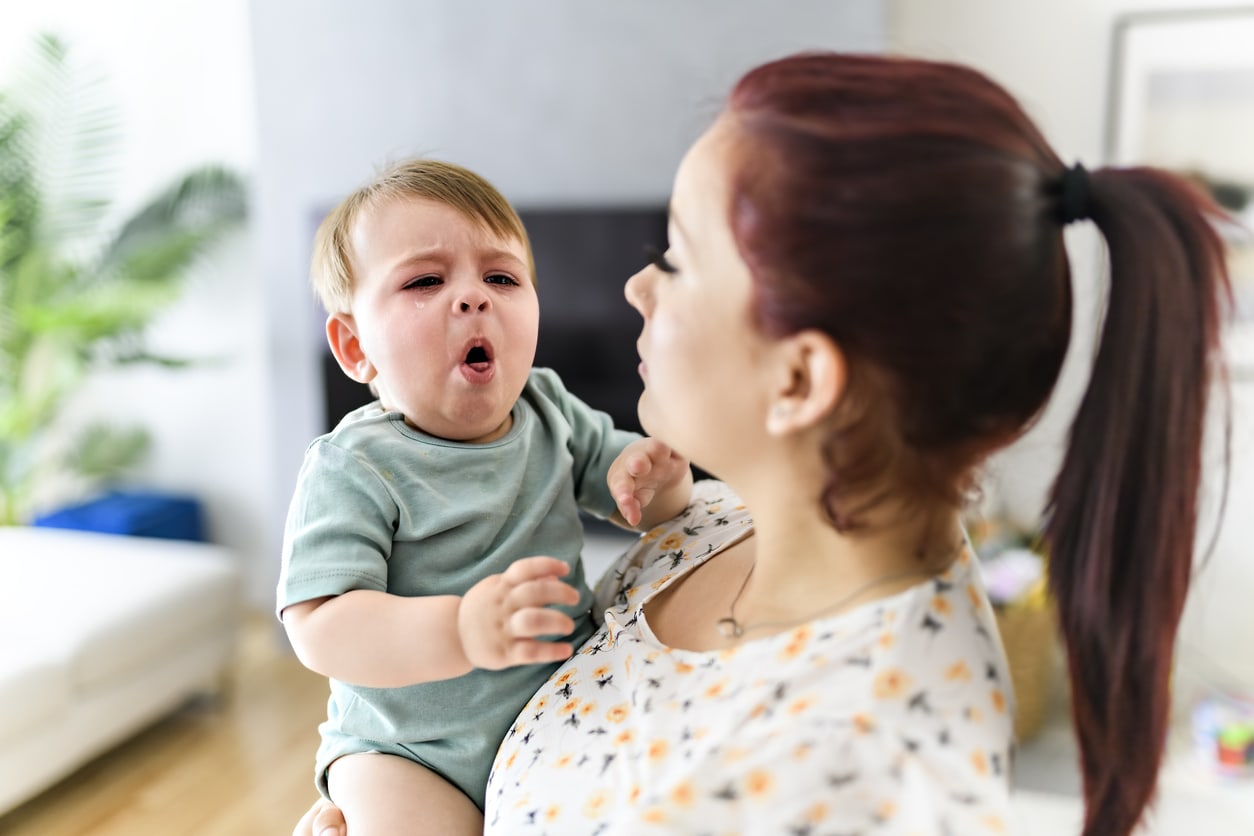
Here are some tips for handling your baby’s sore or red throat:
- Keep your child’s head elevated to allow mucus to drain out of their nose.
- Wash your hands frequently to avoid passing germs to each other. (Alcohol-based hand sanitizers are suitable for this, too.)
- Disinfect (at least once a day) commonly touched areas by the whole family, such as doorknobs, toilet handles, water faucet handles, cellphones, TV remotes, etc.
- Don’t share drinking cups or utensils. Don’t clean the baby’s pacifier by putting it in your mouth, or you might catch the same illness.
- Give your baby small amounts of fluid if they have trouble swallowing, or make homemade popsicles from breast milk or formula.
- Monitor their temperature, and if it hits 101 degrees Fahrenheit for more than three days in a row, call your provider to make them aware.
- Use saline nasal drops to loosen nasal congestion and remove it with a bulb syringe or suction device. Also, use a cool mist humidifier to add moisture to the air.
A sore or red throat is a common symptom in babies, usually due to a viral illness or an indoor or outdoor irritant in the air. Most sore throats resolve themselves with no medication or home remedies in seven to 10 days. If the baby develops other symptoms of illness or doesn’t seem to be getting better, contact your physician for advice. And when your baby is fully recovered, you can enjoy their sweet smile and laughter again!













